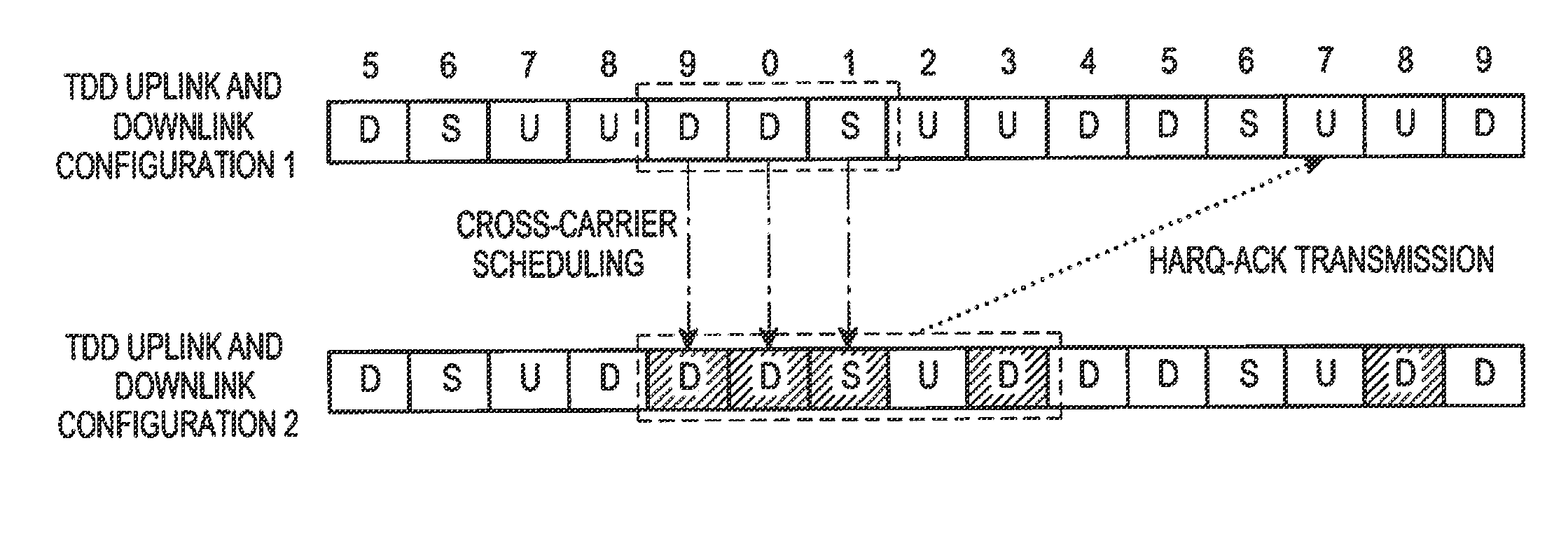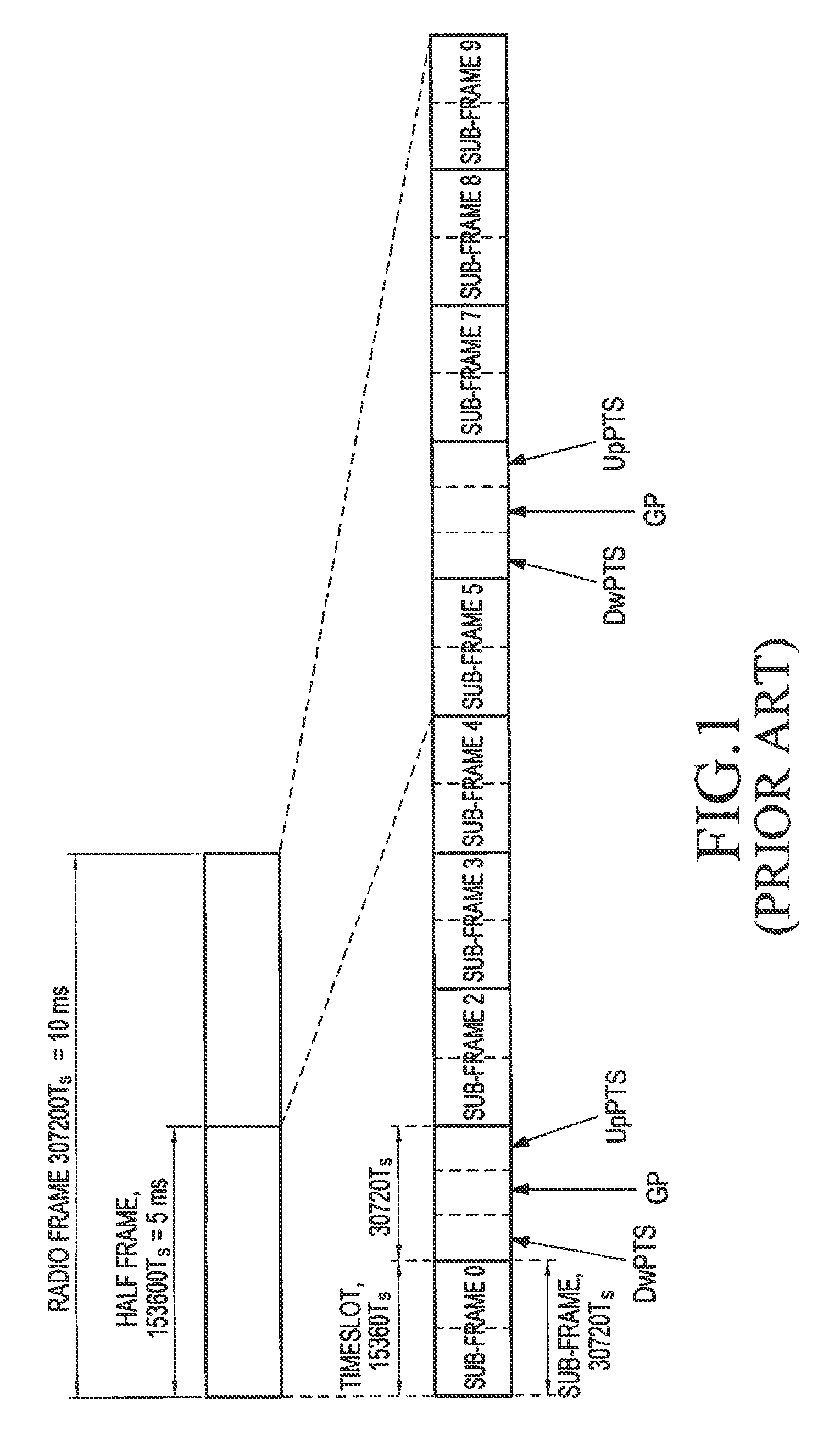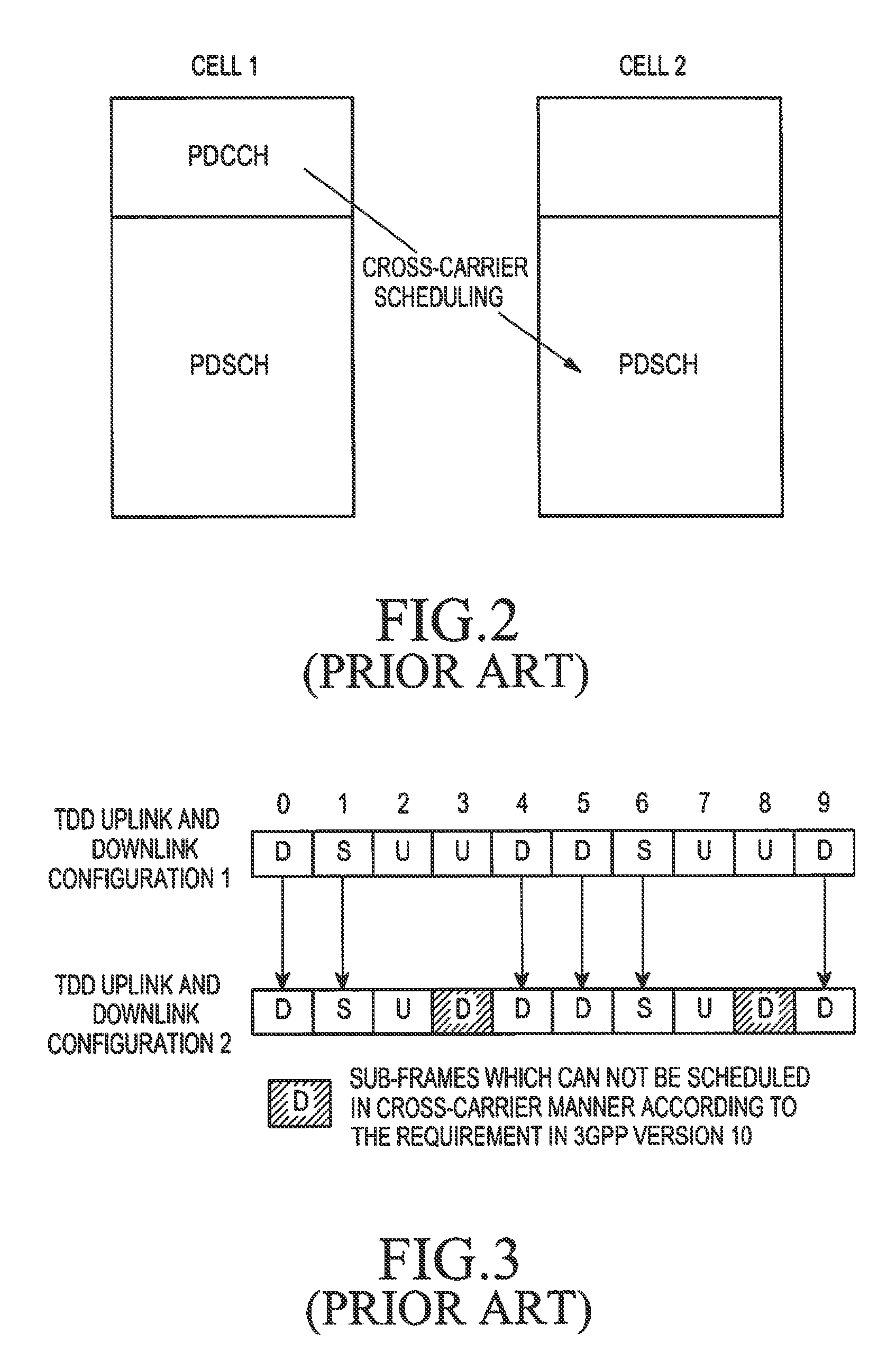Physical downlink shared channel transmission method
a shared channel and transmission method technology, applied in the field of wireless communication systems, can solve the problems of inability to schedule in cross-carrier, grave adjacent channel interference, downlink subframes, etc., and achieve the effect of enhancing cross-carrier scheduling flexibility, increasing terminal user peak rate, and increasing terminal user throughpu
- Summary
- Abstract
- Description
- Claims
- Application Information
AI Technical Summary
Benefits of technology
Problems solved by technology
Method used
Image
Examples
Embodiment Construction
[0028]Hereinafter, various embodiments of the present invention will be described with reference to the accompanying drawings. In the following description of the present invention, a detailed description of known functions and configurations incorporated herein will be omitted when it may obscure the subject matter of the present invention.
[0029]For a TDD system configured with carrier aggregation, in the present invention, TDD uplink and downlink configurations of multiple cells of a base station may be different. Similar to LTE-A, it is possible to configure a UE accessing the base station to work in at least one cell.
[0030]When sending cross-carrier scheduling information to a UE utilizing a PDCCH of a cell for scheduling, a base station also indicates a PDSCH of a cell being scheduled using the cross-carrier scheduling information, and the UE may determine PDSCH data in which sub-frames should be processed according to the indication. Thus, when cross-carrier scheduling is impl...
PUM
 Login to View More
Login to View More Abstract
Description
Claims
Application Information
 Login to View More
Login to View More - R&D
- Intellectual Property
- Life Sciences
- Materials
- Tech Scout
- Unparalleled Data Quality
- Higher Quality Content
- 60% Fewer Hallucinations
Browse by: Latest US Patents, China's latest patents, Technical Efficacy Thesaurus, Application Domain, Technology Topic, Popular Technical Reports.
© 2025 PatSnap. All rights reserved.Legal|Privacy policy|Modern Slavery Act Transparency Statement|Sitemap|About US| Contact US: help@patsnap.com



